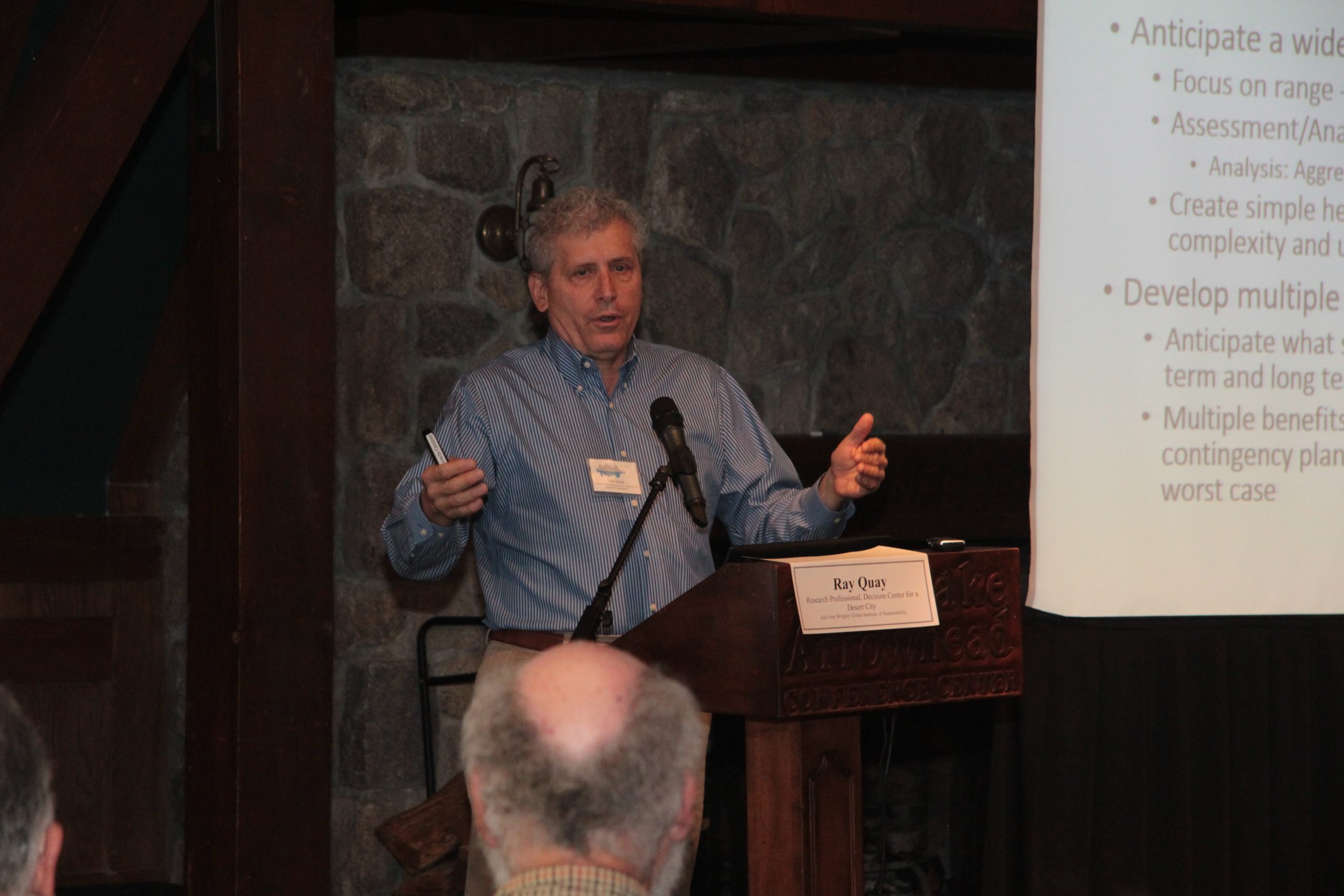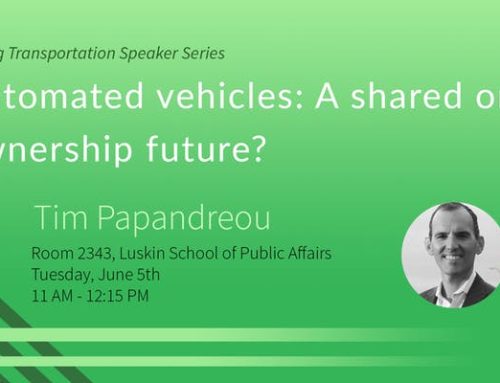The Sonoran Desert covers large parts of California and Arizona, and is the hottest desert in North America. Yet the desert area also hosts Phoenix, AZ, a metropolitan area of 4.3 million and one of America’s fastest-growing cities. Roughly two decades ago Phoenix decided to prioritize the preservation of desert land in the northern part of the city and sought to acquire 20,000 acres of Sonora Desert. The city faced a number of obstacles: a lack of funding to acquire land, pressure from the real estate industry to pursue development, and little public understanding of the issue. What is a city agency to do in such circumstances?
According to research professional Ray Quay, such scenarios are often best approached through a planning framework known as anticipatory governance. On the last day of the UCLA Arrowhead Symposium on Resilient Cities and Regions, Quay offered intriguing case studies from Arizona to show just how the phases of anticipatory governance can be used to plan resilient cities. Quay is currently working with the Decision Center of the Desert Cities Project at Arizona State University, and is drawing on his years of experience in public sector water services and urban planning to push forward a framework to help government entities better prepare for the future.
In his presentation, Quay explained that the process for response can be simplified into four distinct phases: (1) Anticipate a wide range of possible futures: (2) Develop multiple strategies (3) Monitor changing conditions over time (4) Act as anticipated and evaluate your progress. A significant emphasis is placed on looking at all possible scenarios, even “black-swan” outcomes, and developing a range of strategies that can accommodate each of these real-world possibilities.
Such an approach may appear rather general and even banal on the surface, yet the real-world practice had startling success when applied to Phoenix’s goal of acquiring and preserving land in the Sonora Desert. In that case, the city used the anticipatory governance model to develop a range of possible future scenarios based on combinations of (a) high or low public support for land preservation and (b) fast or slow development growth. Additionally, during the the scenario analysis process the city identified areas where development was most threatening open space and decided to prioritize acquisition of land in that particular area.
The sequence of events that followed showed the power of anticipatory governance: In 2000 the city put forward a sales tax referendum on the ballot to raise money for open space acquisition, and an overwhelming 80% of voters supported the plan, thus revealing the extensive level of public support for the preservation project and providing a reliable funding source for the future. The referendum was also accompanied by a recession that hit soon after, diminishing the push for development growth in the Sonora Desert area. This combination of high public support for preservation and low-growth was a best-case scenario for the Sonora Desert land acquisition project, and the city was able to react to such favorable conditions by shifting their priorities to other more urgent lands to acquire. Ultimately, the concept of anticipatory governance provided for the framework for the city to monitor the ongoing political, economic, and cultural environment and flexibly implement the best land acquisition strategy in the context of these shifting environments.
Quay closed his talk by emphasizing that anticipatory governance in practice involves long-term implementation and adaptation, and requires generations of planners to continue the readjustment and monitoring process. This is a departure from the current paradigm in which planners must respond to pressures from elected officials and show success in a limited time frame. To the room of elected officials, public agency managers, and researchers, Quay provoked the question: How can planners create institutions and processes that enable anticipatory governance? He argued that doing so will be critical to achieving more responsive and resilient cities.
Summary by Camille Guiriba and Nate Holmes





